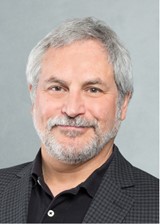After 12 years, Phoebe Mainland has handed over the role of WFSA liaison with the International Organization for Standardization (ISO) Technical Committee ISO/TC 121 to Steven Dain. She outlines why this relationship matters to both WFSA and ISO.
The ISO is an independent, international non-governmental organization with a membership of 168 national standards bodies. ISO brings together experts to develop market-relevant International Standards that support innovation and provide solutions to global challenges.
Q – What is anaesthesia’s role in the ISO?
PM – ISO is composed of technical committees (TC). ISO/TC 121 Anaesthetic and respiratory equipment develops standards for anaesthetic and respiratory equipment. ISO/TC 121 is made up of several subcommittees which focus on specific issues ranging from anaesthetic workstations, and airway devices to drug labels for syringes. Subcommittees may be composed of working groups, which focus on a particular device within the subcommittee remit.
I chair the Medical Suction subcommittee. This has been an opportunity for greater insight into the development of ISO standards and leadership development.
The committees are multi-disciplinary, bringing together manufacturers, regulatory agencies, consultants, engineers and clinicians like me. As a clinician I come with the perspective of an end user, providing feedback or input into how these things work in practice. For example, a piece of equipment should be able to withstand a given event. As clinicians, we don’t need to know details such as the tensile strength of a piece of metal in a device but we do need to know that it will work as we expect it in the conditions that we’ll be using it.
International standards aren’t legally binding; it is up to national regulatory and other bodies to decide whether they want to adopt the standards’ recommendations into their own manufacturing or product performance requirements. ISO standards do have implications for access in specific markets; e.g. only products with CE marking can be sold in the European market.
If a product complies with an ISO standard, it is generally considered by countries to meet required performance and safety requirements. National standards bodies may adopt ISO standards without change, adopt with modifications or have a different national standard.
Q – Why is it important to have WFSA representation on ISO/TC 121
PM – One of the valuable aspects is that WFSA has a voice on the standards committees.
There aren’t many low- or middle-income countries represented on ISO/TC 121. It is expensive to attend the meetings and a lot of countries lack a national standards body, which is a requirement to join an ISO Technical Committee. The WFSA liaison role is to represent the interests of countries and people who can’t be around the table.
From a personal perspective, it is interesting working with the different stakeholders; I get to understand the process and requirements for equipment from many different angles.
Q – Why does ISO work with organizations like WFSA?
PM – It is an opportunity for two-way communication, particularly for those countries that don’t have the capacity to participate in ISO work. WFSA can feed information back from its members to ISO/TC about what is happening in everyday practice and ISO/TC can engage with important professional bodies like WFSA about their work and timelines.
Q – Have you worked with the WFSA Ad Hoc Equipment Committee?
PM – I have worked with the Ad Hoc Equipment Committee in writing the standard for a CO2 monitor and that is hopefully going out for tender. I have updated documents to use for tender when choosing an anaesthetic machine. I’ve fed back to ISO/TC 121 about the Lifebox oximeter, proposed CO2 monitor and more recently the project to develop requirements for a syringe driver.
Q – How does the role support patient safety – do you do any work around medication safety?
PM – Administration of medications is a key safety consideration and very relevant to patient safety. I was also WFSA liaison on ISO/TC 210 Quality management and corresponding general aspects for products with a health purpose including medical devices.
Working groups within ISO/TC 210 cover the development of a range of connectors for various clinical applications that are not compatible with each other, replacing Luer connectors for many applications.
During my time with ISO/TC 210, we have done a lot of work on non-Luer connectors and prefilled syringes. We’ve had meetings with Alan Merry and pharmaceutical companies which make the syringes to identify steps to improve medication safety by developing different syringe connectors to cut down administration errors.
Q – What have been some of your highlights over the past 12 years?
PM – A significant achievement was the ratification of an international standard for anaesthetic machines that don’t require mains electricity or compressed gases. Being able to rely on this type of equipment for low-resource settings is a key consideration for those working in healthcare facilities which lack the infrastructure that many others may take for granted.
The ‘definition of oxygen’ has also been a key issue. The ISO/TC 121 chair and other committee members together with WFSA’s former President, Adrian Gelb have been actively engaged with the WHO Pharmacopoeia and other organizations on this issue.
Other notable areas in which I’ve worked include:
- Non-Luer connectors including for neural/neuraxial pathways
- Surgical plume evacuation
Key areas of focus in the future are sustainability and environmental impact of IS/TC 121 standards and oxygen storage, specifically low to medium-pressure oxygen storage. The potential demand for this in low- and middle-income countries means that this will be a major market for manufacturers in the future.
My appointment as WFSA – ISO/TC 121 liaison has been very rewarding. Dr Dain is well-placed to take over the role. I will continue to be a member of the WFSA Ad-Hoc Anaesthesia Equipment Committee and as a member of ISO/TC 121 and ISO/TC 210.
WFSA’s new liaison to the ISODr Steven Dain is a clinical anesthesiologist in Canada with over 30 years of experience working in academic, rural and surgicenter settings. Formerly the Chair of the Canadian Advisory Committee for the International Organization for Standardization TC121 – Anaesthetic Equipment and Medical Breathing Machines. He is now the Chair of ISO TC 121, Anesthesia and Respiratory Care equipment. He lectures on Health Informatics, medical device interoperability, and computer applications in medicine and is a Chief Medical Informatics Officer at docboxmed.com. His academic affiliation is with the University of Waterloo where he is an Adjunct Professor at the Centre for Bioengineering and Biotechnology. |  |
Further Reading
International Organization for Standardization






